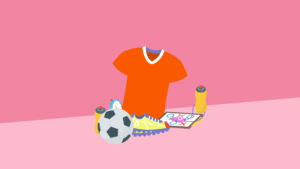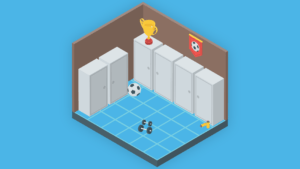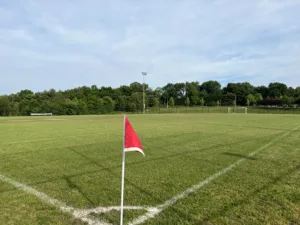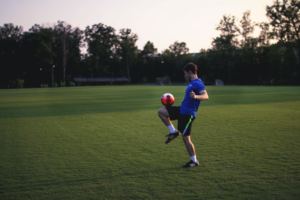Heading a soccer ball is an essential part of a soccer game, and learning how to do it correctly can mean the difference between winning and losing a match. Like a shot or a pass, it’s important to maintain accuracy while executing the perfect header. A miscued header can often lead to failed attempts to score and is detrimental in defense situations. Besides creating chances for the offensive team, a poorly timed defensive header can also lead to own goals. Therefore, it’s important to know what choice header to use based on the player’s positioning. In addition, the height and trajectory of the ball play a massive part in a player’s decision to head. Timing is a critical component in getting the perfect connection.
Set Height To Head the Ball
There is no set height for when a player should attempt to head the ball. Nevertheless, spectators are accustomed to seeing the ball headed when it rises above a player’s shoulders. However, it is not uncommon to see players attempting headers below the shoulders and waist. And in the special an rare occasion before it elevates from the surface. Most importantly, a player’s safety must be at the forefront before trying any header as they risk collisions with other players on the field.
Offensive Header
Offensive headers are critical to putting a team in the lead but are not limited to scoring goals. A well-timed offensive header also carries the weight of putting a teammate through on goal. With that in mind, a player may receive the ball from a goal kick, a free-kick, a corner kick, or simply a cross from a teammate. Yet, the objective remains the same. The main goal of an offensive header is to get over the ball and aim low. However, a player may try the occasional cheeky attempt to lob the goalie.
Heading from a Goal Kick
Most elite goalkeepers choose to take goal kicks that go beyond the halfway mark of the field and can land as far as 75 meters from the kicking line. And with approximately 45 meters left to the opposition goal, there isn’t much a player can do to score with their head. In that case, they should aim to get the ball to their teammate, who may be standing directly in front of them or making a run beyond the defensive line. Yet, the goal remains to aim at their teammate’s feet.
Note: The faster the player heading the ball can get it to their teammate’s feet, the faster the team can transition to the next attacking phase. Suppose the ball lands at a height not conducive for the second player to take their first touch with their feet. The team loses a second in that attack because the receiving player will need more than one touch to control the ball. Not to say that skillful players can always one time a pass regardless of how it gets to them. Yet, play on the ground is always smoother.
Free-kick, Corner kick, or A Cross
An offensive header executed from a free free-kick, a corner kick, or a cross during open play carries similar attributes as a header from a goal kick. However, the stakes are higher because the distance to the opposition goal is closer; pressure amounts for the receiving player to put the ball in the back of the net. With a goalkeeper to beat and teammates around him, the player receiving the ball still has several options to help facilitate chances for himself and his team.
Put the Ball in the Back of the Net
If the player receiving the ball doesn’t see a clear chance to put the ball in the back of the net, they may elect to flick it onto a teammate or nock it down to them as they would from a goal kick. Yet, if the opportunity arises, they should, without a doubt, take on the chance. The goalkeeper positioning and the ball’s trajectory play a key role in how the player should meet the ball in its path. If the player receives the ball at the far post, he must aim to head it back across the goal.
Goalkeeper Shuffling to Save
Naturally, the goalkeeper would be shuffling to meet the ball that has just flown over him, and it is always tricky for goalies to shift their weight back to their starting position. Therefore, if the player gets the correct connection on the ball, it is highly likely to end up in the goal. However, if the ball doesn’t end up in the back of the net, the choice to head it across the goal produces less room for error. Suppose the goalkeeper manages to get a glove on it. In that case, the power on the header should force him to parry it to the middle of the goal, creating a second opportunity for the opposition team to pounce.
Defensive Header
Watch this space!








